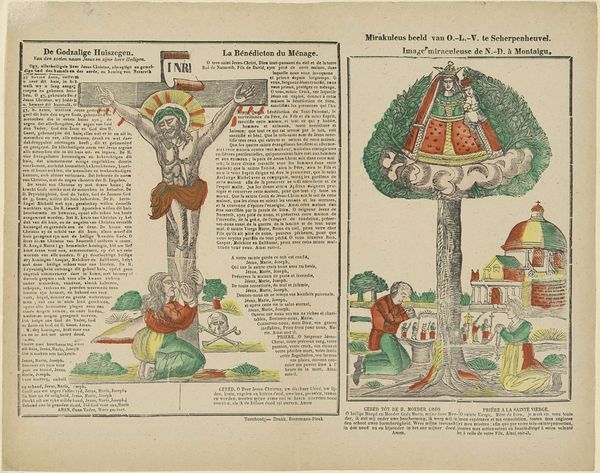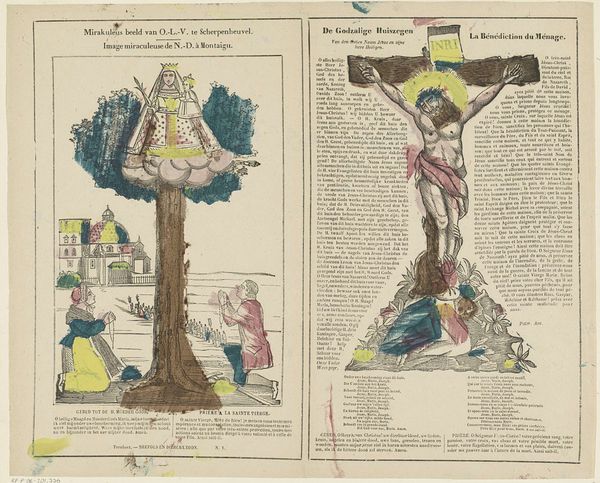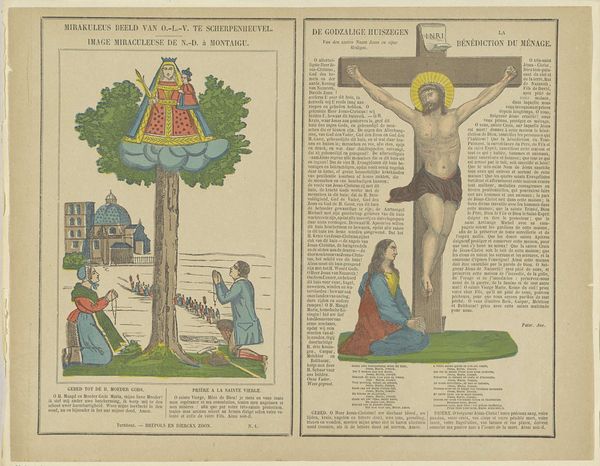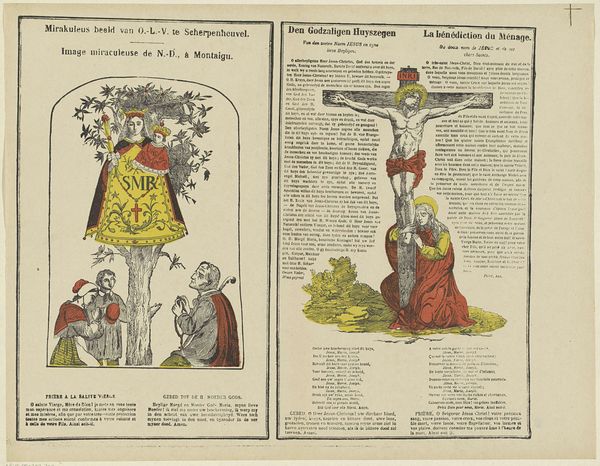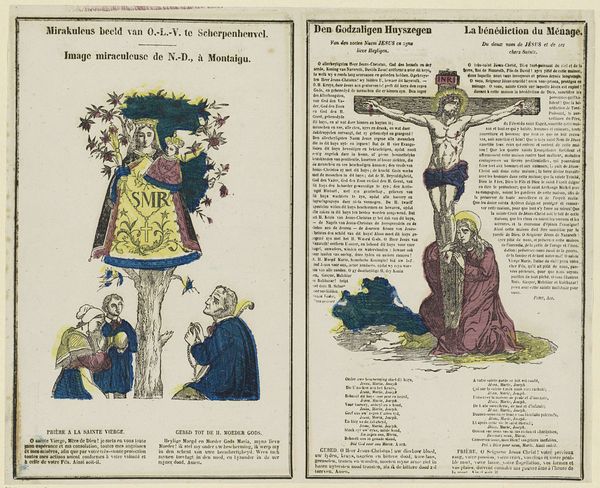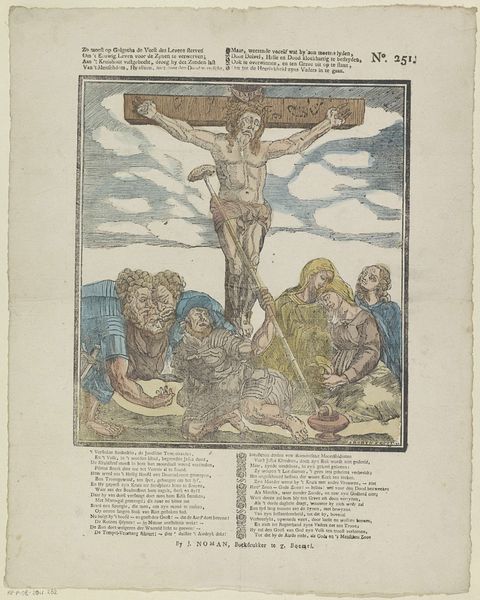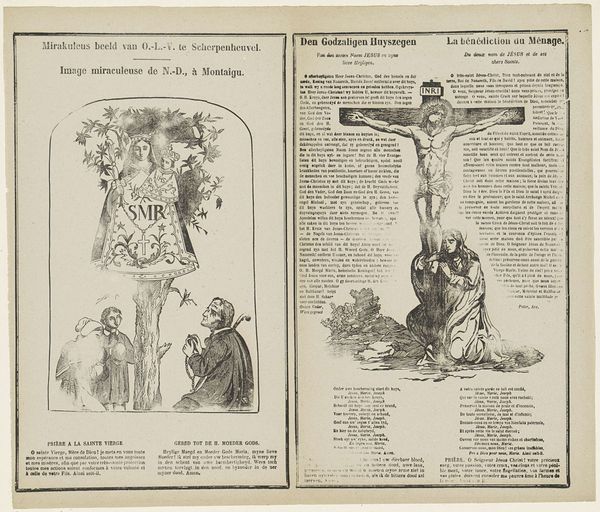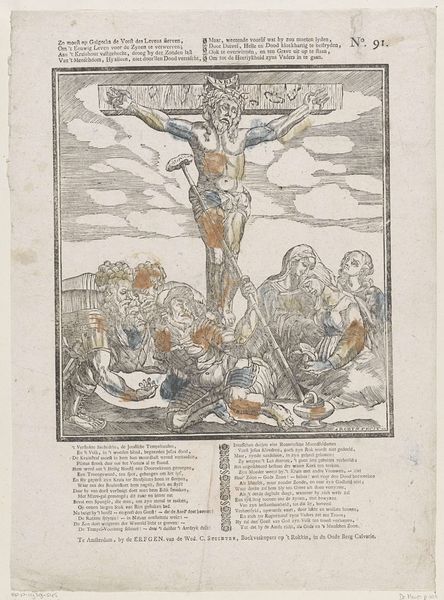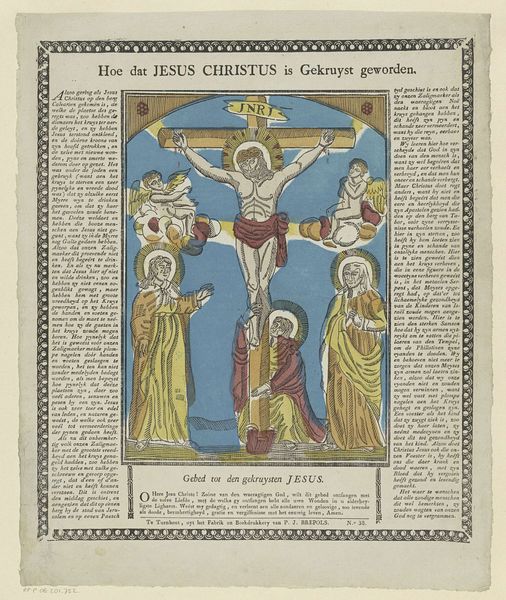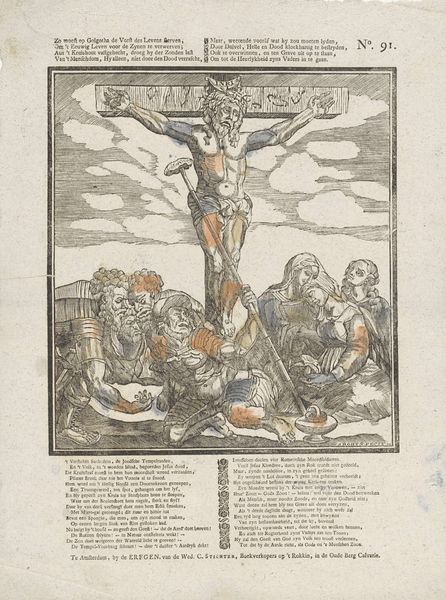
De Godzalige Huiszegen. / La Bénédicton du Ménage. / Mirakuleus beeld van O.-L.-V. te Scherpenheuvel. / Image miraculeuse de N.-D. à Montaigu 1700 - 1900
0:00
0:00
Dimensions: height 324 mm, width 436 mm
Copyright: Rijks Museum: Open Domain
This is a printed devotional image from an unknown date by Jacobs-Brosens, presenting religious scenes and prayers in Dutch and French. These popular prints offered spiritual guidance within the domestic sphere, reflecting the strong religious identities present in the 19th century European households. The triptych format features Christ on the cross, flanked by praying figures in the lower-left panel. Note the skull, a traditional memento mori symbol, reminding viewers of mortality and the need for piety. In the right panel, the Virgin Mary stands atop a tree, surrounded by praying devotees, referencing the Marian pilgrimage site of Scherpenheuvel. This artwork can be understood through the lens of gender and class: The image reinforced the role of women as guardians of religious virtue within the home. Simultaneously, its accessibility allowed even the working class to engage with religious imagery and practice. What kind of emotional comfort did these images bring to those navigating life’s difficulties? Perhaps it is the image's personal and accessible nature that makes it emotionally resonant.
Comments
No comments
Be the first to comment and join the conversation on the ultimate creative platform.
